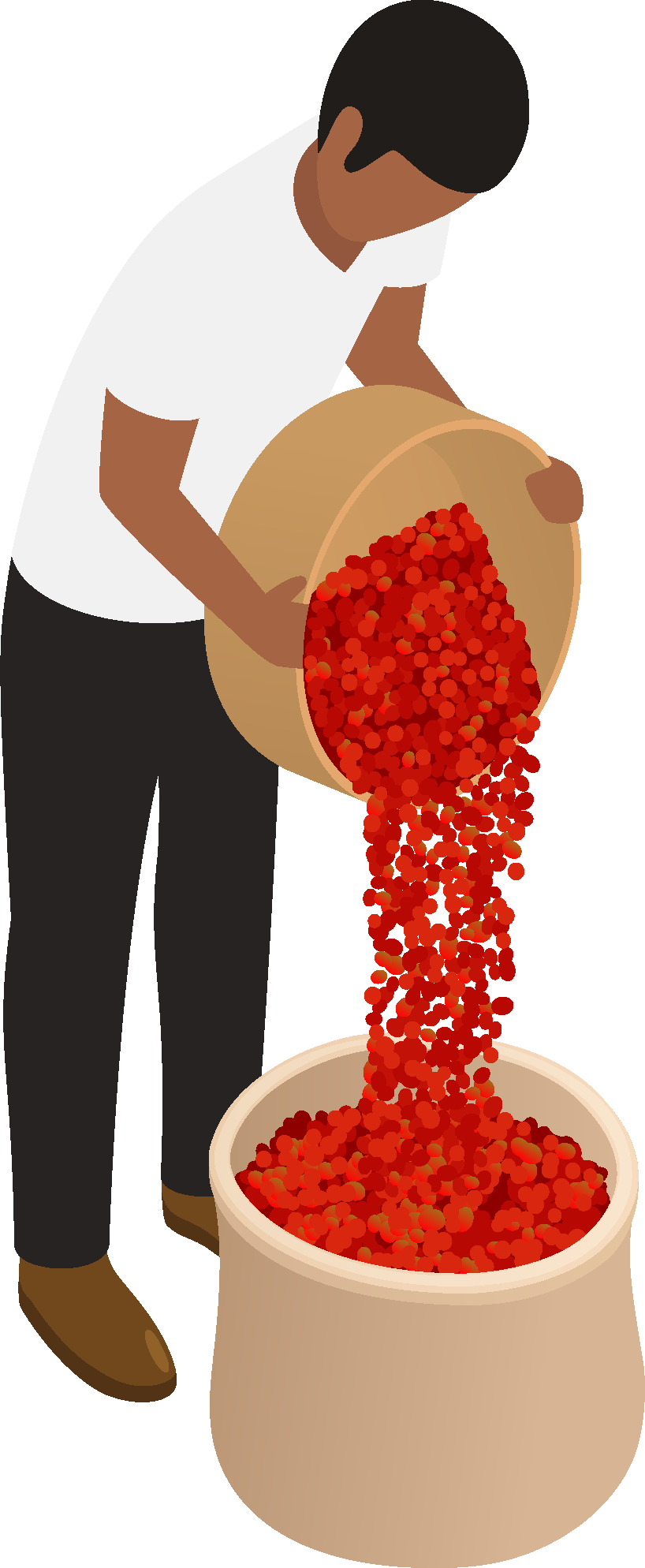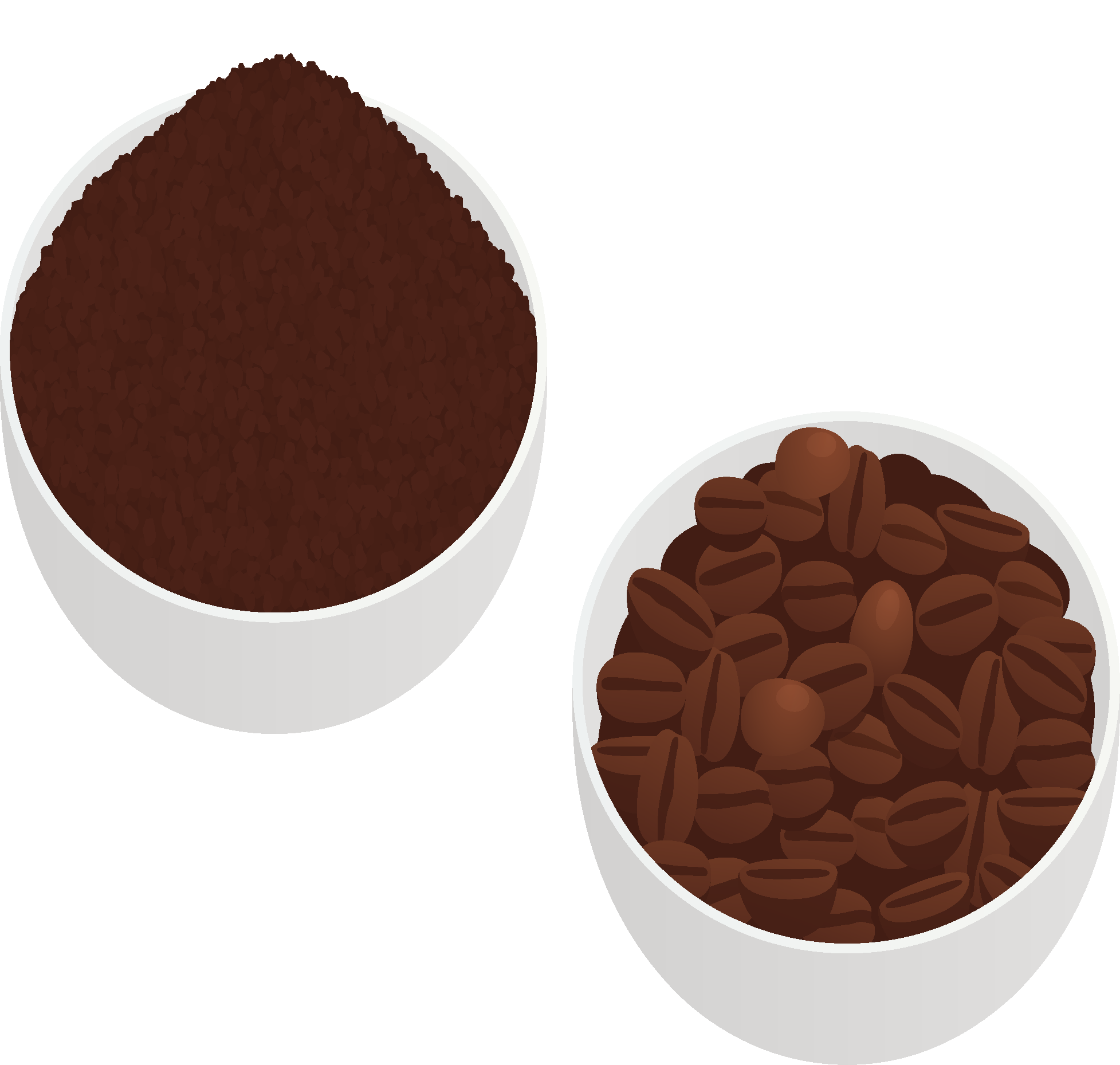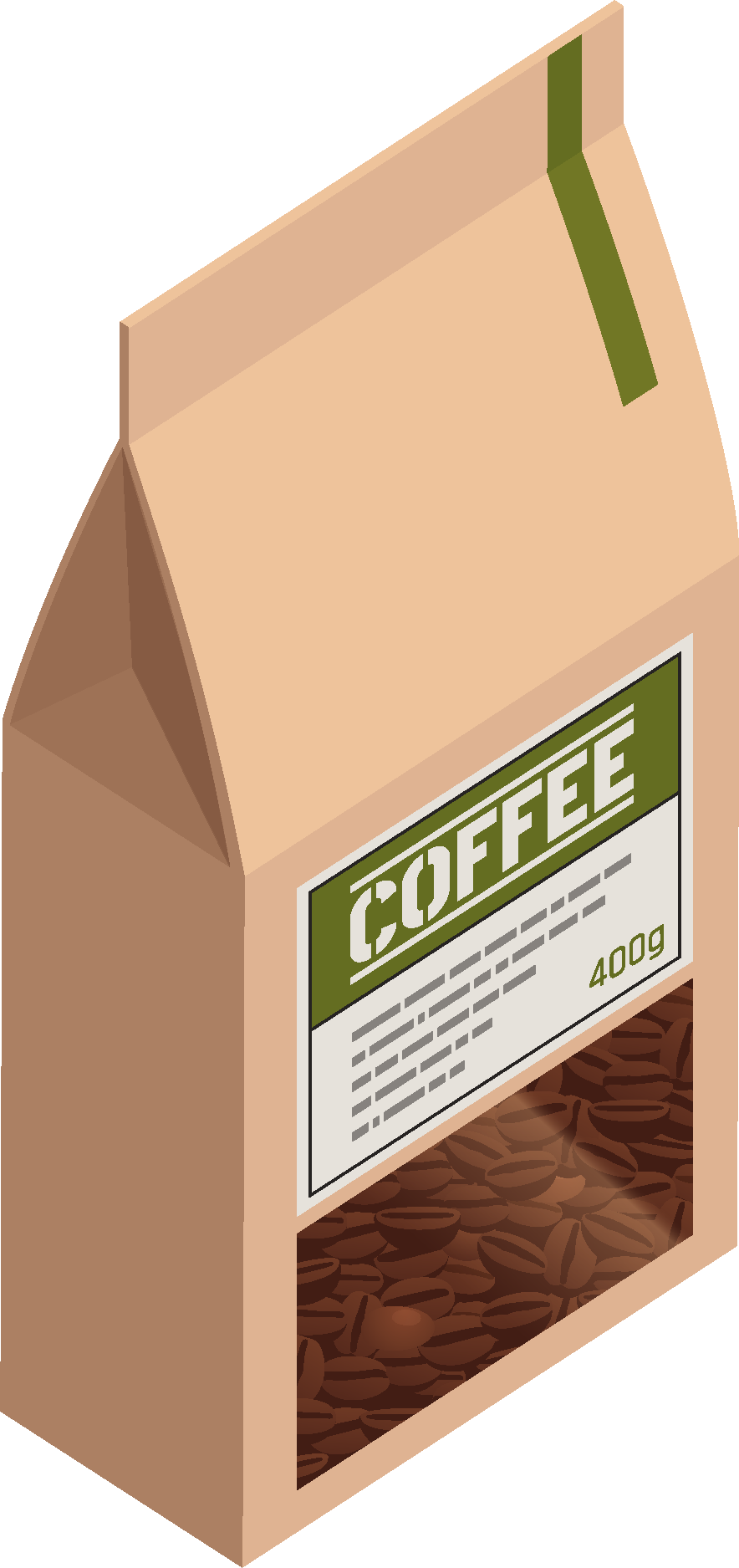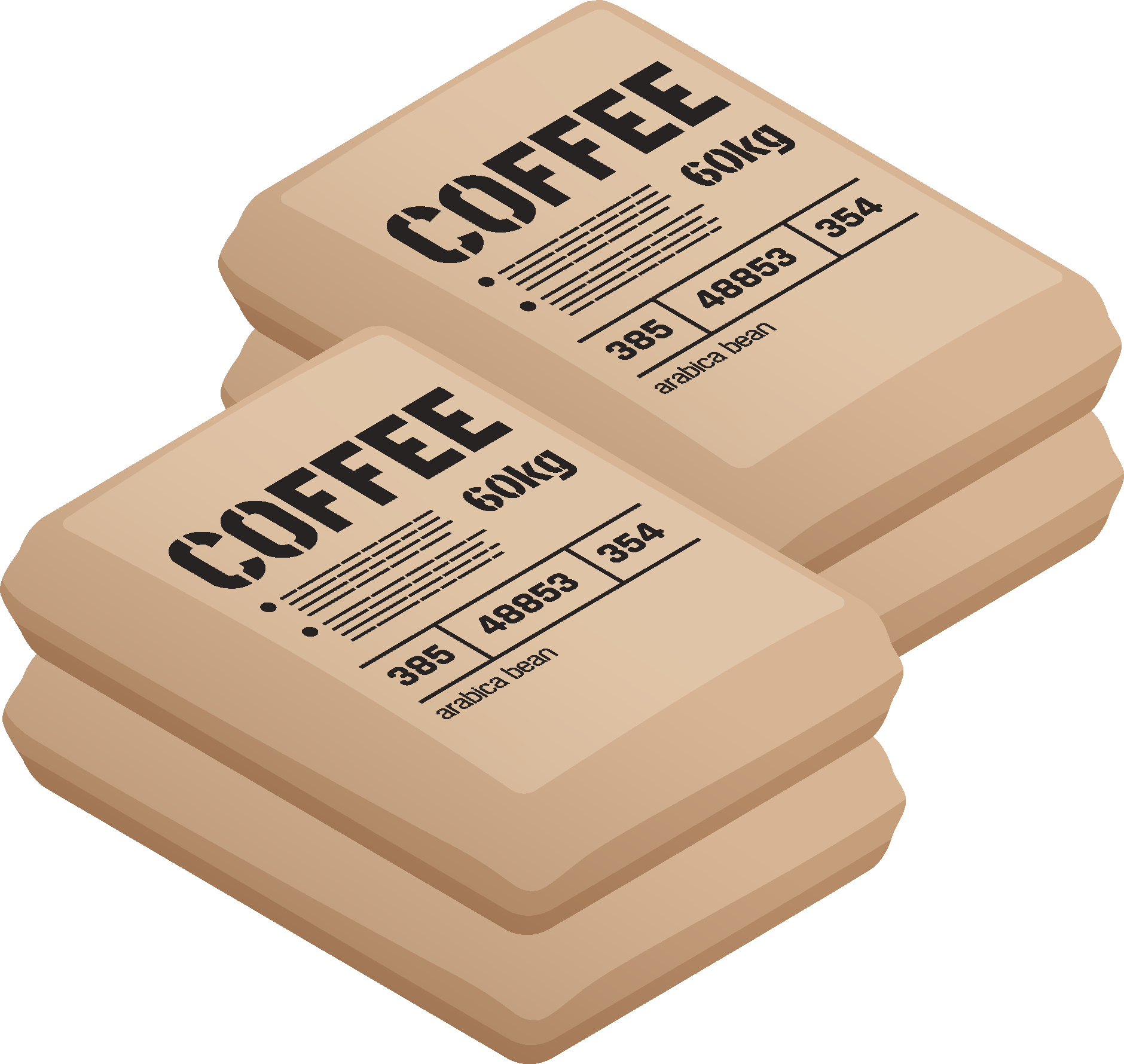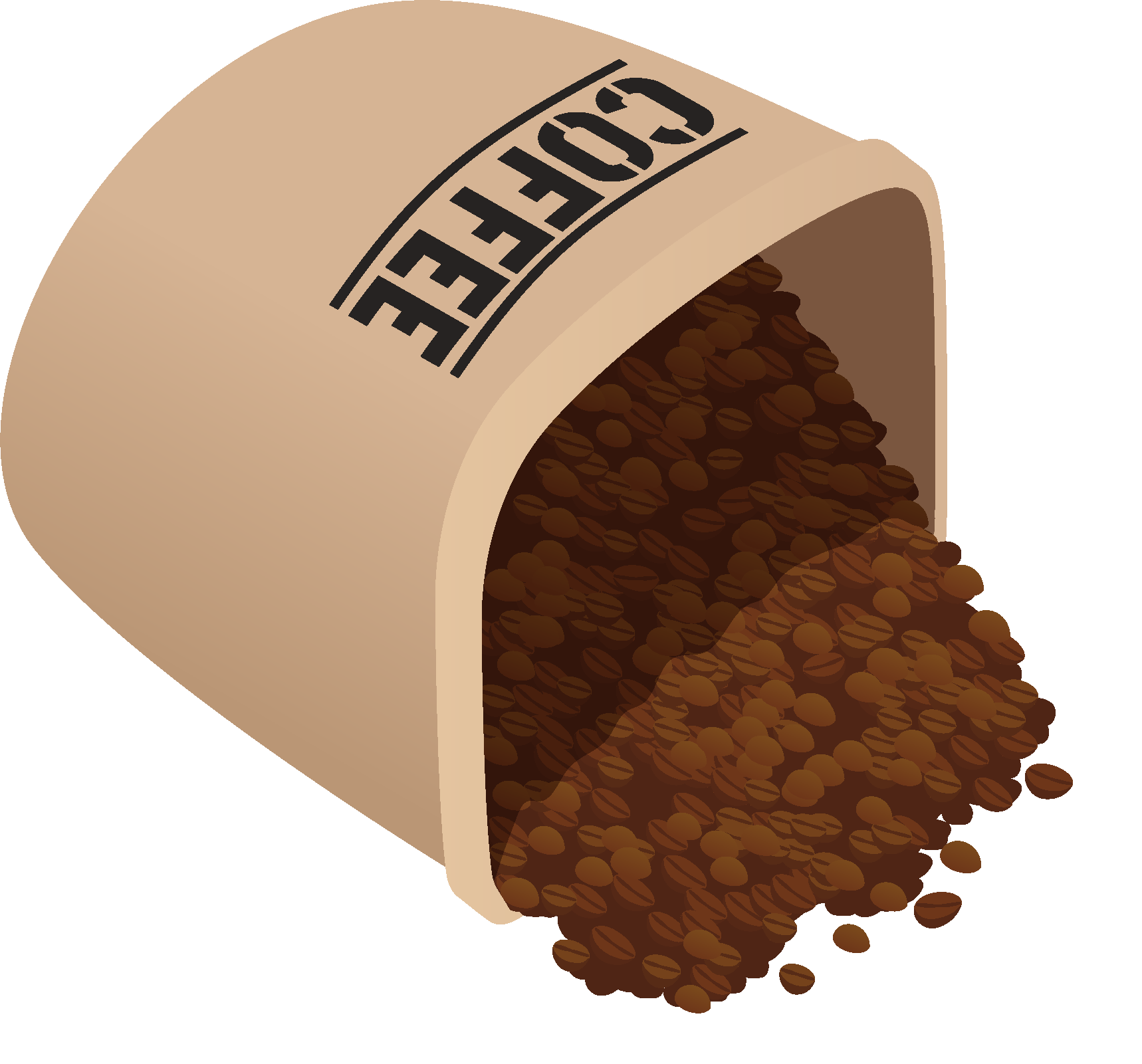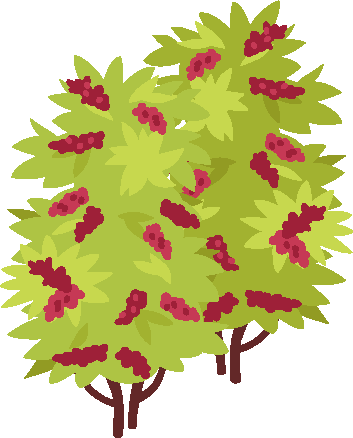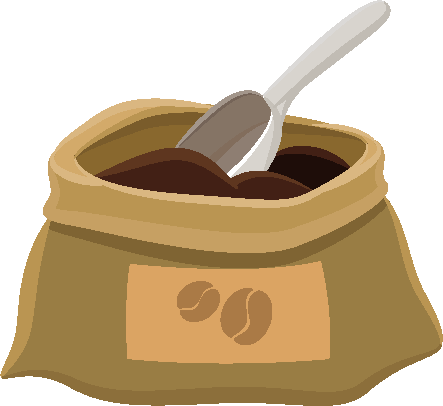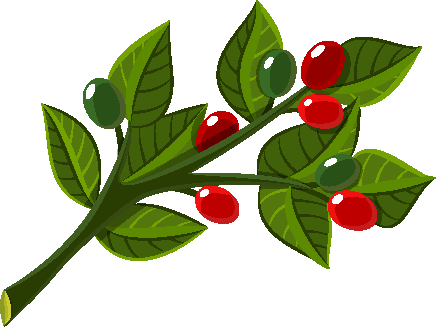The Definitive Guide To Specialty Coffee In 2021
Specialty coffee is the highest-quality coffee you can buy.
What defines specialty coffee, and why is it so expensive?
For several weeks I studied specialty coffee and talked with baristas and roasters. Then I collected all my knowledge in this article.
Now you don't need to look all over the internet for information about specialty coffee—you can find everything here.
In this article you will learn what the term specialty coffee means and how a coffee receives the label, as well as how to properly store and prepare specialty coffee.
Let's get started!
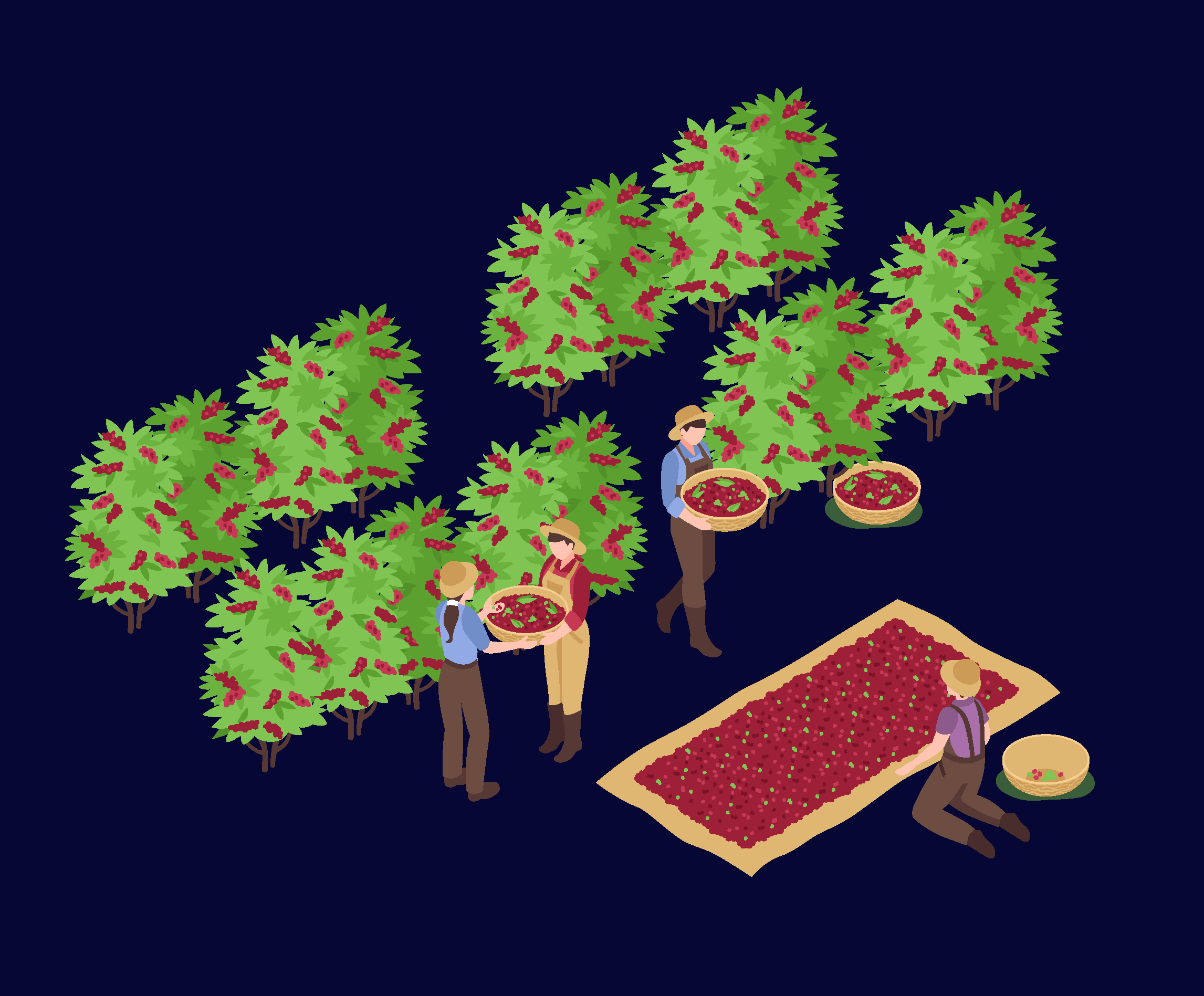
Before you start...
What Is Specialty Coffee?
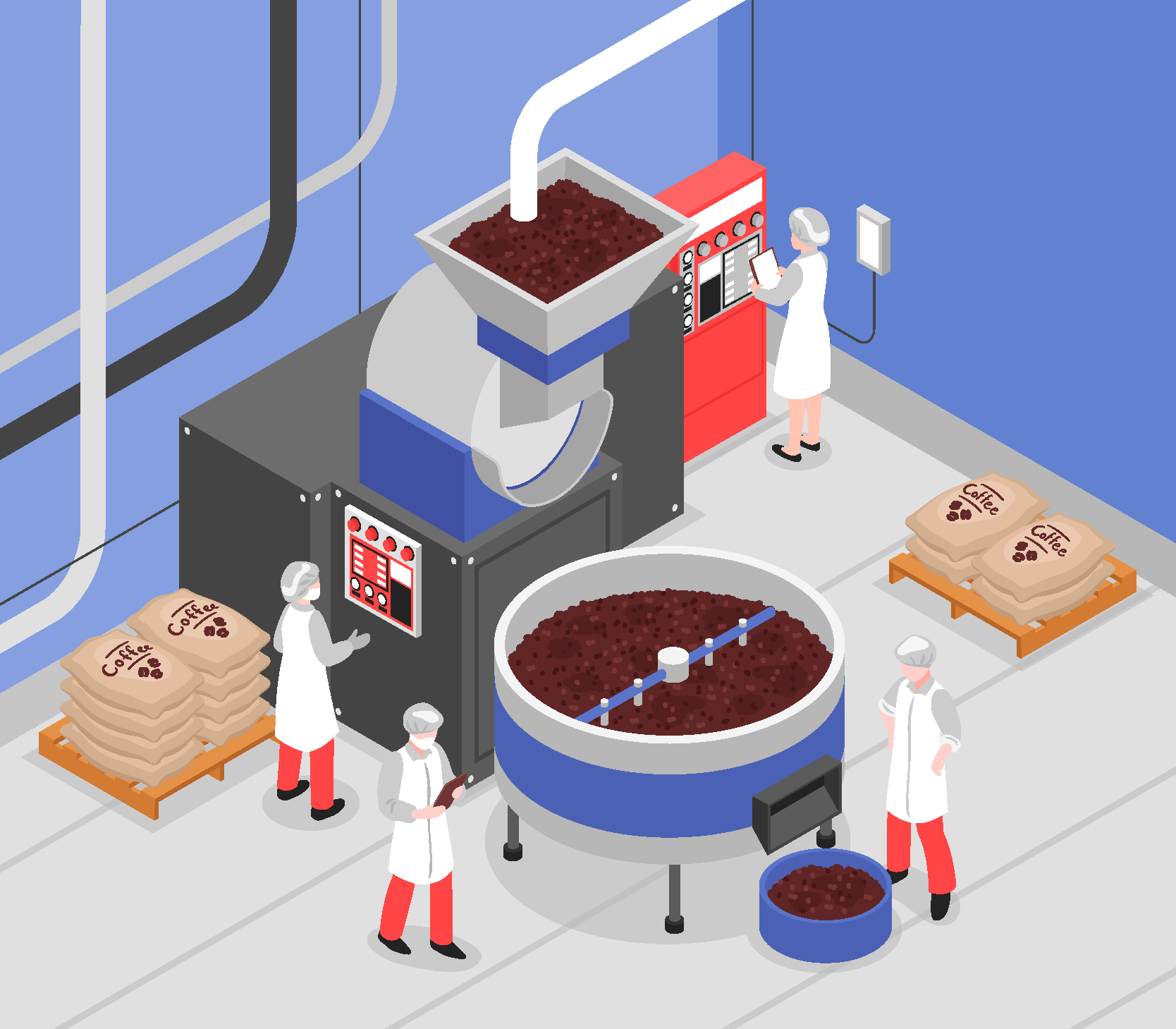
What Is Specialty Coffee?
Let's talk about what specialty coffee is and what makes it so great.

The beans are evaluated by certified tasters called Q Graders.
There are three minimum requirements beans must meet to qualify as specialty coffee:
- Ripe coffee beans harvested by hand
- Score 80 points or higher on the Specialty Coffee Association (SCA) scale
- Maximum of five Category 2 defects per 350 grams of beans
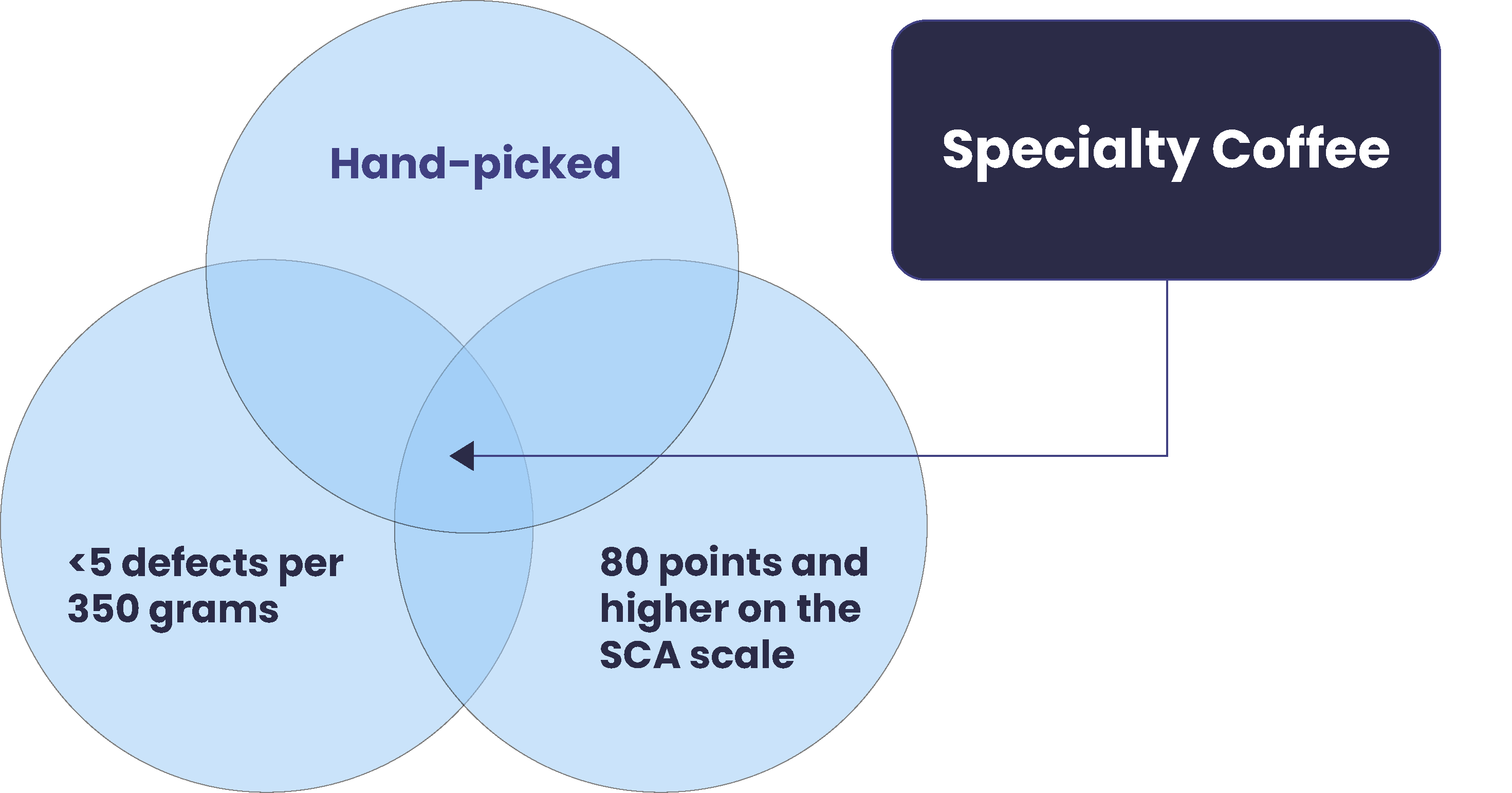
There are two categories of defects: Category 1 (primary) and Category 2 (secondary).
To be recognized as specialty coffee, green coffee must have no defects in the first category and no more than five defects in the second category.
We'll talk more about this in the section on coffee evaluation.
What Makes Specialty Coffee So Special?
Specialty coffee consists of the finest beans.
These beans are grown at high altitudes, so they're more acidic in taste but reveal their characteristics well and have floral and fruity notes.
The more we know about beans, the better they're likely to be.
With specialty coffee, you can fully trace the beans' origin: not only the region in which they were grown but even the farmer that grew them and how he harvested and processed them.
Why is it important to know this information?
So you can choose the coffee that is most likely to suit you.
Beans of the same variety can taste very different depending on where they are grown.
Special requirements are met at each stage of production:
Specialty coffee beans are grown in specific climatic conditions and harvested at the optimal time.
They are quickly transported to the processing point after harvest so the coffee stays fresh and doesn't lose any flavor potential.
The beans are washed, peeled, and dried properly.
The roaster then adjusts the roast profile to properly reveal the flavors of the specific beans.
Lower-quality, non-specialty beans are often over-roasted to hide imperfections.
As a result, the coffee tastes uniform and predictable.
Due to the high quality of specialty coffee beans, different roast levels can be applied to unleash their full potential.
Specialty coffee opens up a variety of flavors to explore.
If the production process complies with grading rules and the beans receive a score of 80 points or higher, they count as specialty coffee.
When you buy specialty coffee, you pay a higher price to cover the entire production chain, from the challenging high-altitude harvest to the right barista preparation.
Specialty Coffee Grading
Who sets the standards for specialty coffee and how is it evaluated?
In this chapter, we will take a closer look at each step in the production of specialty coffee.
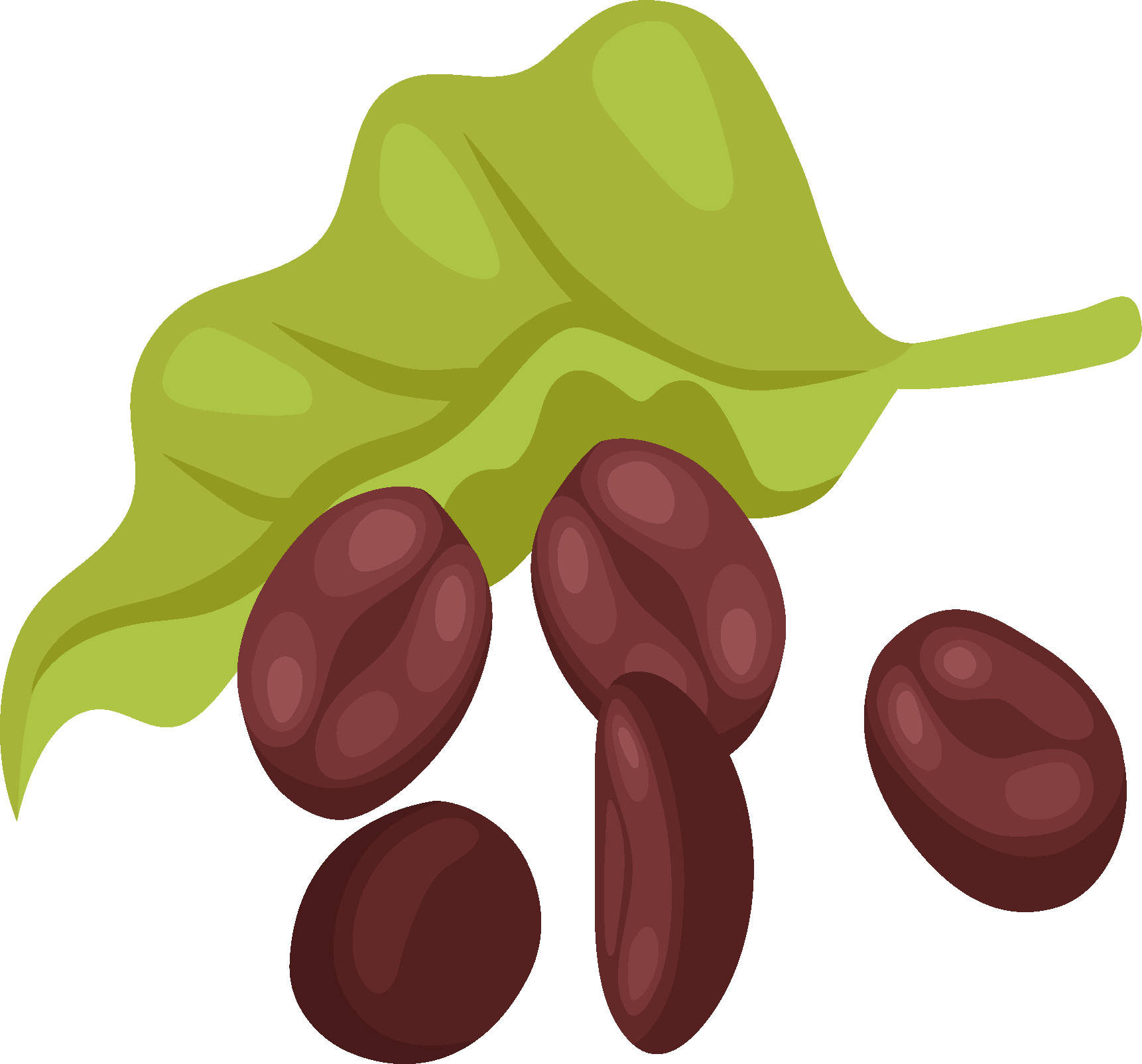
How Is Specialty Coffee Graded?
The term specialty coffee is awarded not for an entire variety, but for a specific lot of that variety.
This coffee must be from one crop year, one processing batch, and one farm.
The coffee is judged based on a visual inspection of the green coffee beans before roasting and on cupping after roasting.
Green Coffee Grading
To determine coffee quality, 350 grams of green coffee beans are visually inspected and defective beans are noted.
Bean Defects
Primary
Secondary
Foreign objects
Unripe beans
Black beans
Shriveled beans
Fungus on beans
Cut and split beans
Mold
Damaged by insects
Defects can be Category 1 (primary) or Category 2 (secondary).
Category 1 defects include foreign objects, black or sour beans, and beans damaged by fungus, mold, or insects.
Sour beans are identified by their appearance: they will be brownish-red in places.
Category 2 defects include unripe beans and shriveled, cut, or split beans.
Specialty coffee must have no primary defects and can have a maximum of five secondary defects.
Cupping Grading
This is the evaluation of coffee during the cupping (tasting) process.
The coffee beans are roasted, ground, and then brewed with hot water for 3-5 minutes.
This versatile method allows you to fully reveal the beans' taste and aroma.
Cupping Grading

1. Roasting beans

2. Grinding beans

3. Brewing with hot water

4. Waiting 3-5 minutes

5. Cupping
Other brewing methods are not suitable for cupping, as they reveal the taste in different ways.
Who Sets the Standards for Specialty Coffee?
There are multiple non-profit organizations that aim to expand the specialty coffee community, continually improve specialty coffee's quality, support farmers, and create supply paths that don't include unnecessary middlemen.
Specialty Coffee Association (SCA)
This is a non-profit trade organization that emerged from the merger of the American and European SCAs. It includes coffee professionals from all over the world.
Its members, from producers to baristas, are involved in the creation of specialty coffee.
The goal of the association is to develop the global coffee community.
Its activities are aimed at making specialty coffee production prosperous and fair for everyone.
Coffee Quality Institute
This non-profit organization works to improve the quality of coffee and the lives of the people involved in coffee production.
It helps manufacturers create a simple supply chain so that everyone gets a fair price for their work.
World Coffee Research (WCR)
WCR conducts research and development to reduce the impact of negative climatic conditions, low yields, and bean diseases on coffee growers.
The organization also works on the genetic improvement of coffee and the development of new varieties.
The organization strives to improve the standard of living of coffee producers, as coffee's quality depends on them.
The Specialty Coffee Journey Explained: From Bean to Cup
Beans have a long journey before you can brew them to get a quality cup of coffee.
At every stage there are people whose main goal is to produce a great product.
They spend their time and energy to create specialty coffee.
The Specialty Coffee Journey from Bean to Cup

The Coffee Farmer
- Grows beans
- Focuses on quality over quantity
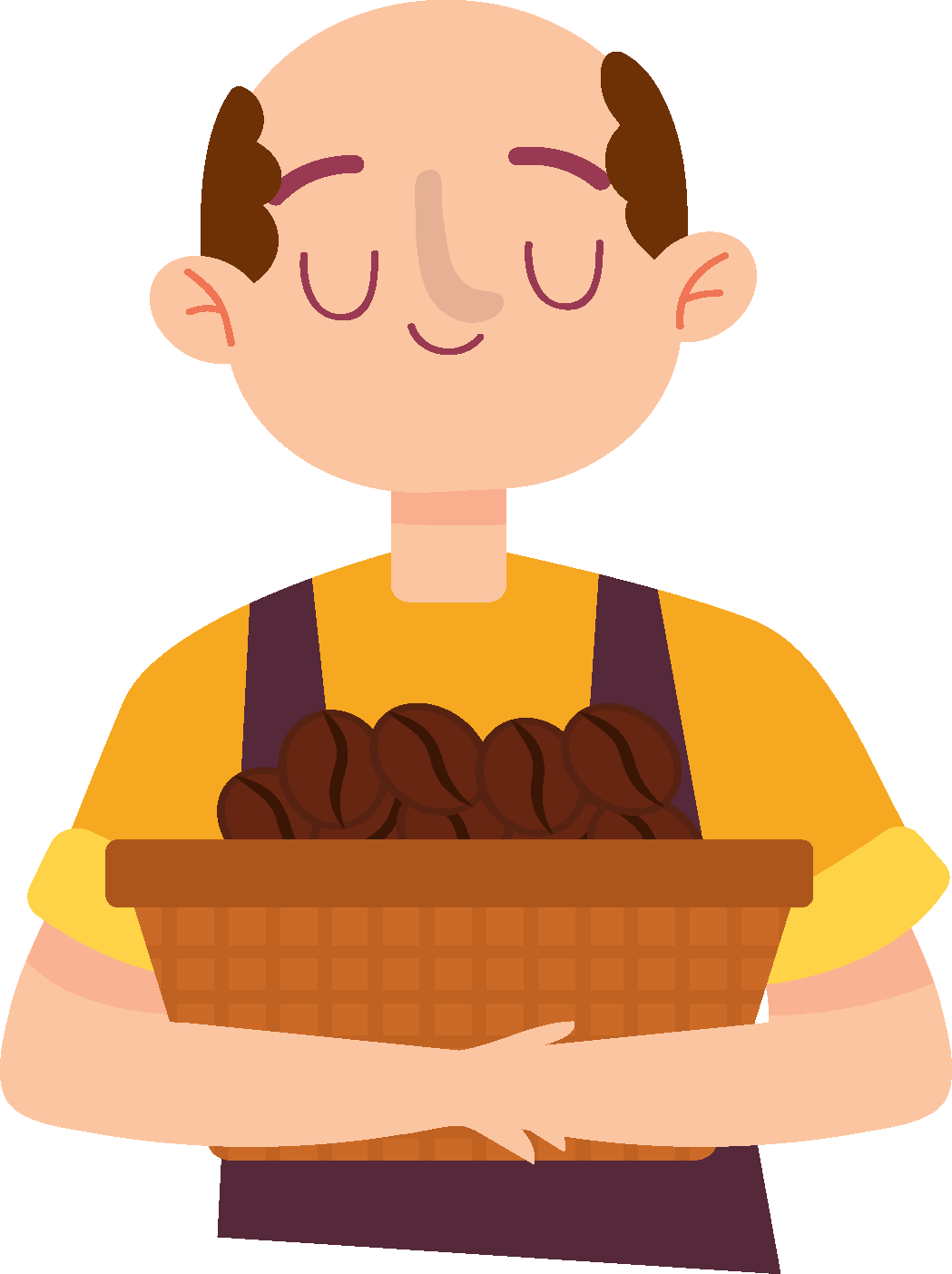
The Green Coffee Buyer
- Conducts capping
- Selects the best varieties

The Roaster
- Selects the roasting profile
- Reveals the unique flavor of the beans
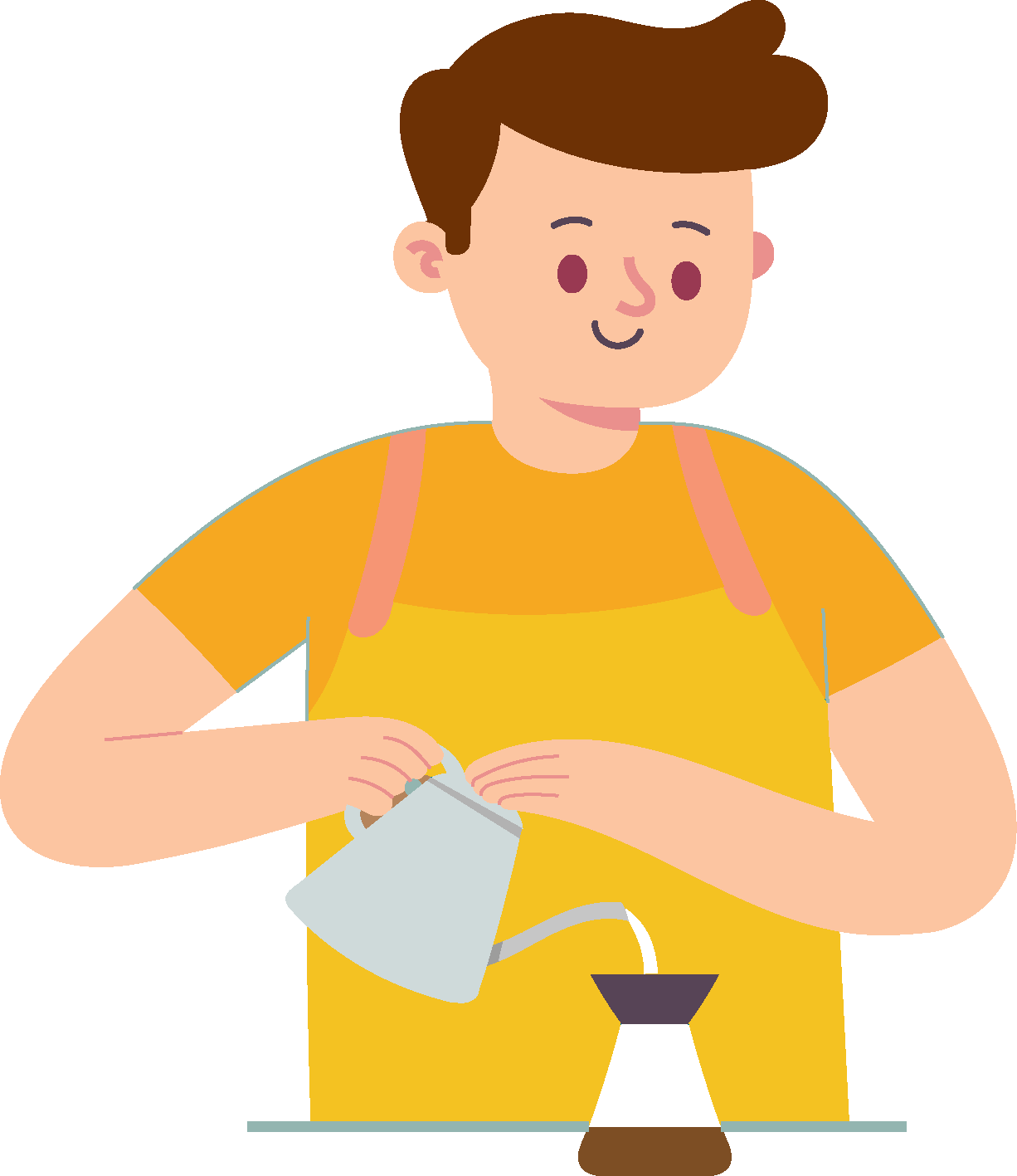
The Barista
- Knows about the origin of beans
- Knows how to properly work with brewing equipment
- Reveals the flavor of the beans during cooking

The Consumer
- Buys specialty coffee
- Enjoying a cup of coffee
- Contributes to the life of the coffee community
The Difference Between Normal Coffee and Specialty Coffee
To understand why specialty coffee is so unique, you have to compare it to regular commercial coffee.
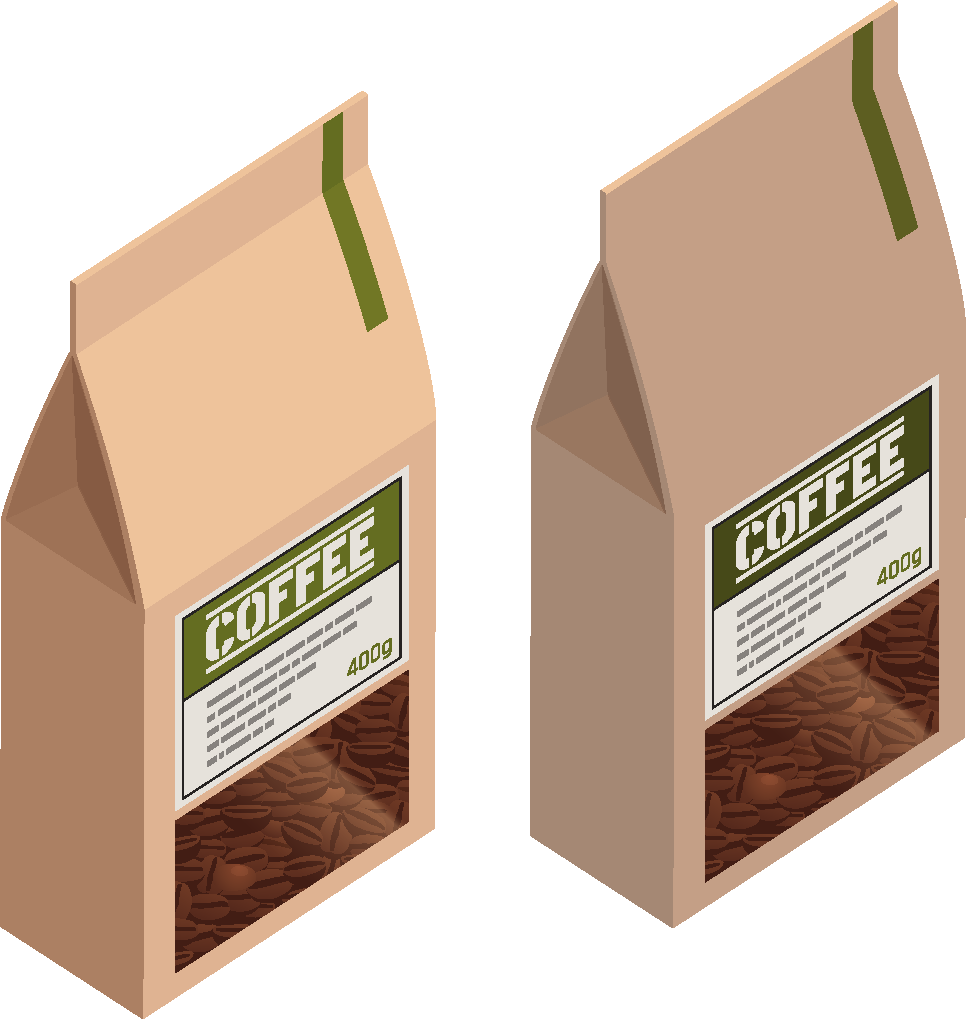
Specialty Coffee vs. Commercial Coffee
Commercial coffee is most often roasted and packaged in the large factories of well-known brands.
Specialty coffee is usually roasted and packaged in small batches at small roasters or coffee shops.
But the differences between them are much deeper than it might seem at first glance.
Specialty Coffee vs. Commercial Coffee
Specialty Coffee
Commercial Coffee
Harvested by hand and further sorted to remove defects
Harvested by machine
Can be traced back to the growing farm
Beans are bought from all over the world; the source is impossible to track
Roasted in small batches by small local roasters or coffee shops
Roasted in large batches by large enterprises
Single-origin Arabica beans
Lower-grade Arabica beans; Robusta; blends
Bright, rich taste
Uniform taste
Quality
This is the main difference between specialty and commercial coffee.
Special attention is paid to the cultivation and harvesting of specialty coffee.
Such coffee is grown in places with certain climatic conditions at a particular time of the year, is harvested by hand, and is sorted to remove defective beans.
Each lot of specialty coffee is approached individually.
A roasting profile is selected for each individual lot in order to reveal all the features of taste and to find a balance between acidity and natural sweetness.
Properly roasted coffee reflects the characteristics of the place where it was grown.
You can trace the origins of specialty coffee not just to its country of origin but also to a specific farm.
Commercial coffee is made from lower-quality beans. It is intended for general sale.
It is impossible to trace commercial coffee's origins because beans are bought from all over the world and made into blends.
Not all commercial coffee is necessarily made from low-quality beans.
Commercial coffee can be good for its average price. It is used by large coffee chains and well-known brands.
Commercial coffee can even be made from beans that are grown to be specialty but that for some reason have not received a grade of 80 or higher.
Taste
Specialty coffee has a acidic taste due to being grown at higher elevations.
At the same time, it reveals floral, honey, fruit, and berry notes.
To open these notes, the beans are light- or medium-roasted.
Commercial coffee tastes more uniform.
More often than not, it is dark-roasted to hide taste defects.
Elevation
Specialty coffee is grown at high elevations of at least 3280 feet above sea level. For optimal maturation, the coffee should be shade-grown.
Caffeine Content
It's impossible to say for sure whether specialty or commercial coffee contains more caffeine, or whether they're equal in this regard.
The amount of caffeine in beans is influenced by variety, roast, and brewing method.
If you are looking for coffee with a high caffeine content, you should know that Robusta has almost twice as much as Arabica.
And light-roasted coffee contains more caffeine in beans than dark-roasted coffee if you measure them with a scoop because light-roasted beans are denser than dark roasts.
Harvesting
Commercial coffee is harvested using a machine method and sometimes a manual method.
The goal is to harvest as many beans as possible in the shortest possible time.
The quality of the coffee cherries is low: both under-ripe and over-ripe cherries end up in the harvest.
Specialty coffee always harvested by hand. This ensures that lots contain only high-quality coffee.
Specially trained harvesters pick only ripe coffee cherries. They leave unripe cherries to continue growing and remove bad cherries so the coffee tree won't be harmed.
Some farmers then re-sort the harvested beans by hand to remove any unsuitable ones.
Coffee beans that are not suitable for specialty coffee are sold to commercial brands.
Purity
Organic coffee grows on land that hasn't had chemicals used on it for 5-10 years.
Also, the trees aren't treated with chemicals or pesticides.
This coffee is grown in high-altitude areas in the shade of taller trees to ensure slow maturation.
It is harvested by hand and dried in the sun.
It's easy for specialty coffee to receive an organic certification;
it's much harder for commercial coffee to be certified organic, due to the less-strict cultivation and production requirements.
Type of Bean
Only single-origin Arabica beans are recognized as specialty coffee.
Commercial coffee not only uses lower-grade Arabica beans but also mixes beans from multiple sources.
Robusta beans are often added to commercial blends, but this does not mean that such coffee isn't worth buying.
Robusta is used for flavor purposes; it contains more caffeine than Arabica and gives coffee drinks a characteristic bitterness, so it's often added to espresso blends.
Buying Specialty Coffee
Choosing a package labeled "specialty coffee" doesn't ensure that you'll get the highest-quality coffee or the coffee that best matches your tastes.
Pay attention to this list of attributes and you'll be able to choose the best coffee next time you're at a coffee shop, roaster, or store.

Region
The region where beans are cultivated gives an idea of the coffee's taste.
Coffee from Central America is characterized by a bright, clear taste and pronounced acidity.
Coffee from South America can have fruity, earthy, nutty, or other types of notes.
If you prefer fruity notes and high acidity, choose beans from Ecuador.
If you prefer floral, citrus, and chocolate notes and fresh acidity, choose beans from Colombia.
If you want a wide range of flavors but less acidity, choose beans from Brazil.
In Asia, coffee from Thailand can be distinguished by its medium acidity and notes of spices and flowers.
In the Pacific region, coffee from Sumatra and Indonesia can be distinguished by its acidity and spiced, forest-like notes.
Kenya and Ethiopia's beans are the most popular out of all African coffees. These beans have notes of flowers, a delicate sweetness, and a mild acidity.
Try different beans and find the region that suits you best.
Processing Method
The taste of coffee depends on how the beans are processed.
Each of the three methods detailed below affects the taste of coffee differently.
This is also called the dry process or the unwashed process.
First, coffee cherries are sun-dried for several weeks.
After that, the beans are separated from the cherries by hand or with a special machine.
They are then dried again to achieve a moisture level that allows them to be safely stored and transported.
This method gives the coffee an exotic fruity flavor, a pleasant sweetness, and a low acidity.
The aroma of a cup of coffee made from naturally processed beans will be rich and bright.
This is also called the wet process.
First, the coffee cherries are immersed in water to separate ripe cherries, which sink, from unripe cherries, which float.
Then the ripe cherries go to a washing station, where they are washed with such force that the beans are separated from the cherries.
The beans are then dried to the desired moisture level.
The taste of coffee processed this way is not as pronounced as the taste of coffee that goes through the natural process.
A drink made from these beans will have a high acidity and a clear aroma.
This is a cross between the two previous methods.
The coffee cherries are soaked and then de-pulped, but the sticky part of the cherry fruit remains on the beans rather than being washed off.
The beans are then sun-dried for several days.
As a result of this treatment, coffee brewed with these beans has a sweet taste and medium acidity.
Variety
Coffee varieties are genetic subspecies.
They are more important to farmers than to buyers.
The taste of the varieties of a species is almost the same.
But when planted and grown in specific climatic conditions, varieties of coffee trees behave differently: they may be less susceptible to certain diseases or produce more coffee fruit.
Notes
Good growing conditions and proper roasting create aromatic coffee.
In a finished drink, you can taste notes of things like sweet honey, spices, fruits, flowers, berries, and chocolate.
For specialty coffee, a flavor profile is more than just a label on the packaging.
You can really taste specific notes in your cup when the coffee is prepared properly.
Roast Date
Coffee beans' freshness peaks in the first two to three weeks after roasting.
Buy coffee that has the roast date on the packaging because this shows that the manufacturer is focused on the high quality of the product.
What About Blends?
Blends are used to complement single-origin coffee with new flavors and aromas.
They allow you to make a cup of coffee that's softer and more balanced.
They smooth out the wild taste of single-origin beans.
If you are into more traditional coffee, blends are the best choice.
Roasters usually offer two or three blends and several single-origin coffees.
Where to Buy Specialty Coffee
You won't find specialty coffee in a regular grocery store.
Specialty coffee's unique flavors, higher cost, and short freshness period make it hard to sell to large masses of consumers.
Where to Buy Specialty Coffee

Cafes
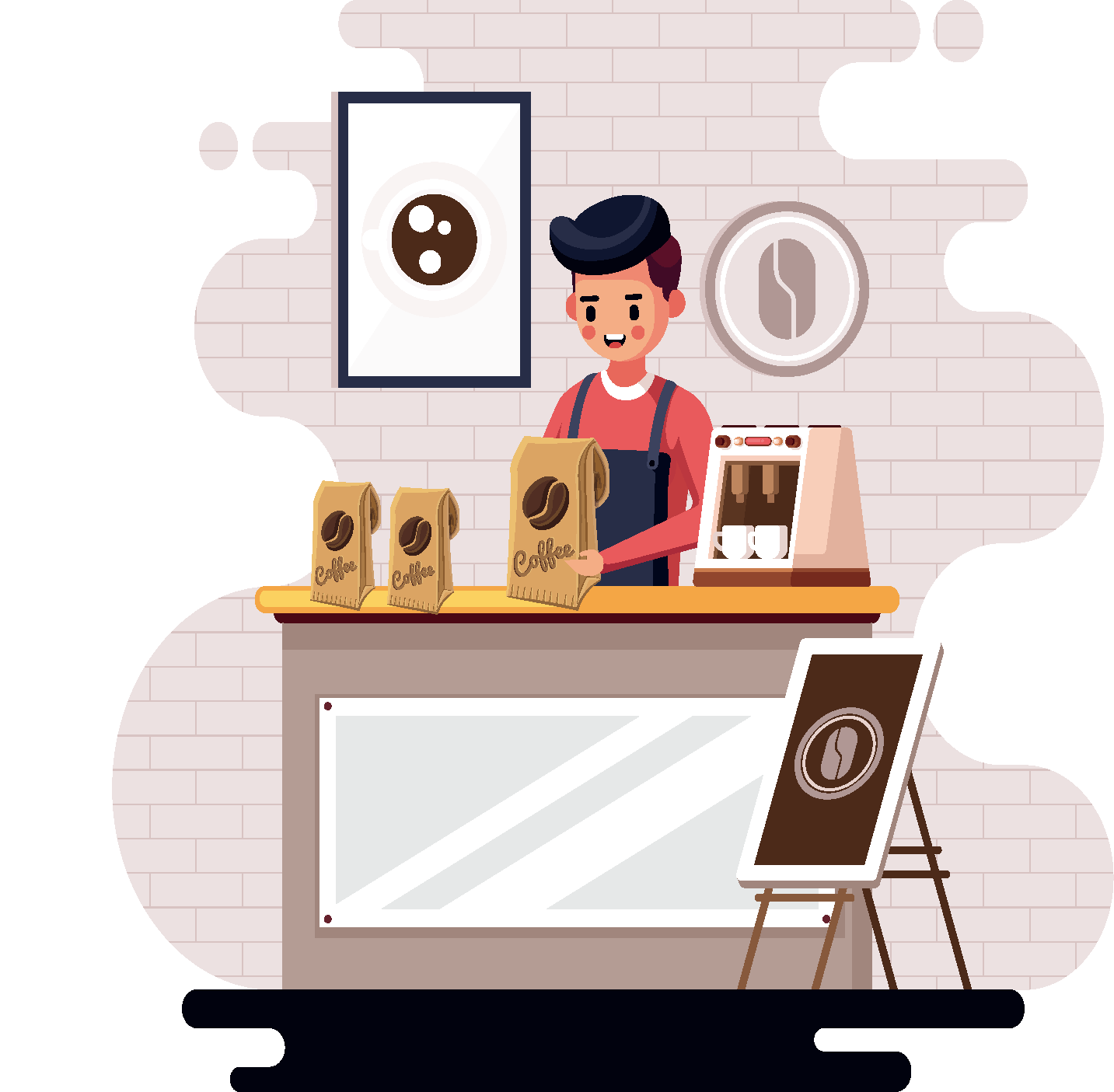
Direct From Roaster

Online
Here's where you can buy specialty coffee:
Cafés
Specialty coffee can be enjoyed at coffee shops, especially ones that are affiliated with local roasters.
Trained baristas can prepare the drink in a variety of ways: in an espresso machine, in a pour-over coffee maker like a Chemex, in an AeroPress, in a French press, or in a cold-brew coffee maker.
Specialty coffee is usually served pure, without cream, milk, or syrups.
Roasters
You can buy freshly roasted beans directly from a roaster.
The people who roast specialty coffee love what they do and will gladly guide you through the varieties, roast levels, and flavor profiles they have on hand.
Online
If your city doesn't have a local roaster, you can order beans online.
Many roasters have websites that accept orders for shipping.
You can familiarize yourself with their assortment, read about the varieties and origins of the beans, and choose the appropriate roast and flavor profile.
After ordering, the coffee will be roasted and sent to you.
Storing Specialty Coffee
After roasting, coffee loses its freshness very quickly.
To get the most out of your specialty coffee, it must be stored properly.
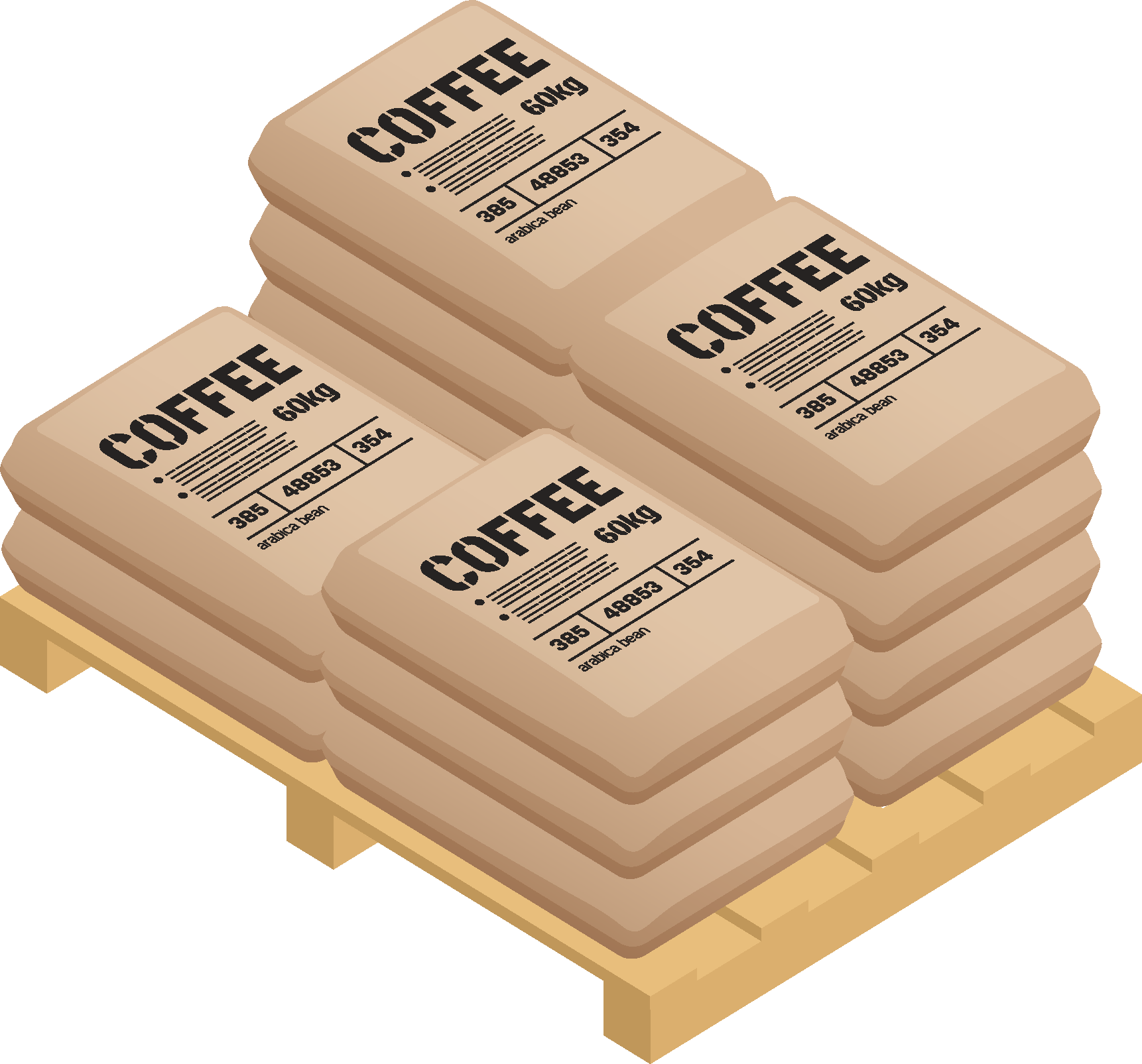
How Long Does It Last?
From the moment the coffee is roasted, no more than three to four weeks should pass before you use the beans.
During this period, the beans are at their freshest.
Then they begin to lose their unique characteristics.
How to Tell If Your Coffee Is Too Old
With prolonged or improper storage, coffee not only loses its freshness but can also deteriorate.
Brewing coffee from old beans won't hurt you, but you definitely won't be able to appreciate the whole range of flavor.
Taste
Coffee made from old beans won't have a strong flavor or delight you with an invigorating effect.
The coffee will be watery and will have only a faint aroma.
Smell
Spoiled coffee has a faint smell with rancid notes of stale coffee oil.
Appearance
If the beans are too dark in color and are very dry, with no coffee oils on the surface, they're hopelessly spoiled.
It's worth tossing them.
Residue
When you pick up a handful of fresh beans, there will be some coffee oils left on your hands.
If no oils are left behind, your coffee is probably too old.
The Bag
When buying coffee, pay attention to the packaging and the roast date.
When packaged in regular paper bags, coffee stays fresh for just a week.
Foil bags with a one-way gas release valve help keep the beans at their peak flavor for about a month after roasting.
How to Keep Specialty Coffee Fresh Longer
When buying specialty coffee, you probably want to enjoy as many cups as possible.
To ensure your coffee lasts long enough, you must store it properly.
How to Keep Specialty Coffee Fresh Longer
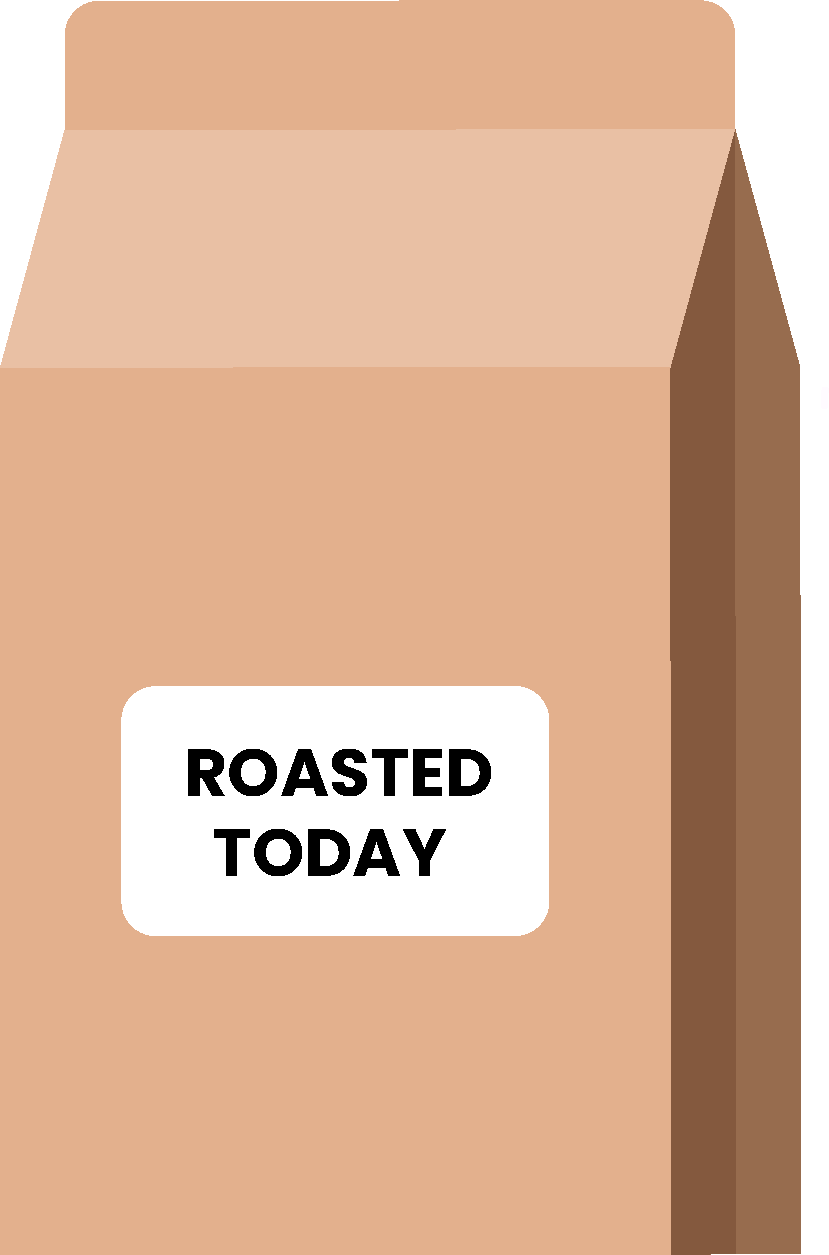
Buy Your Coffee as Fresh as Possible

Ensure You Buy Whole-Bean Coffee
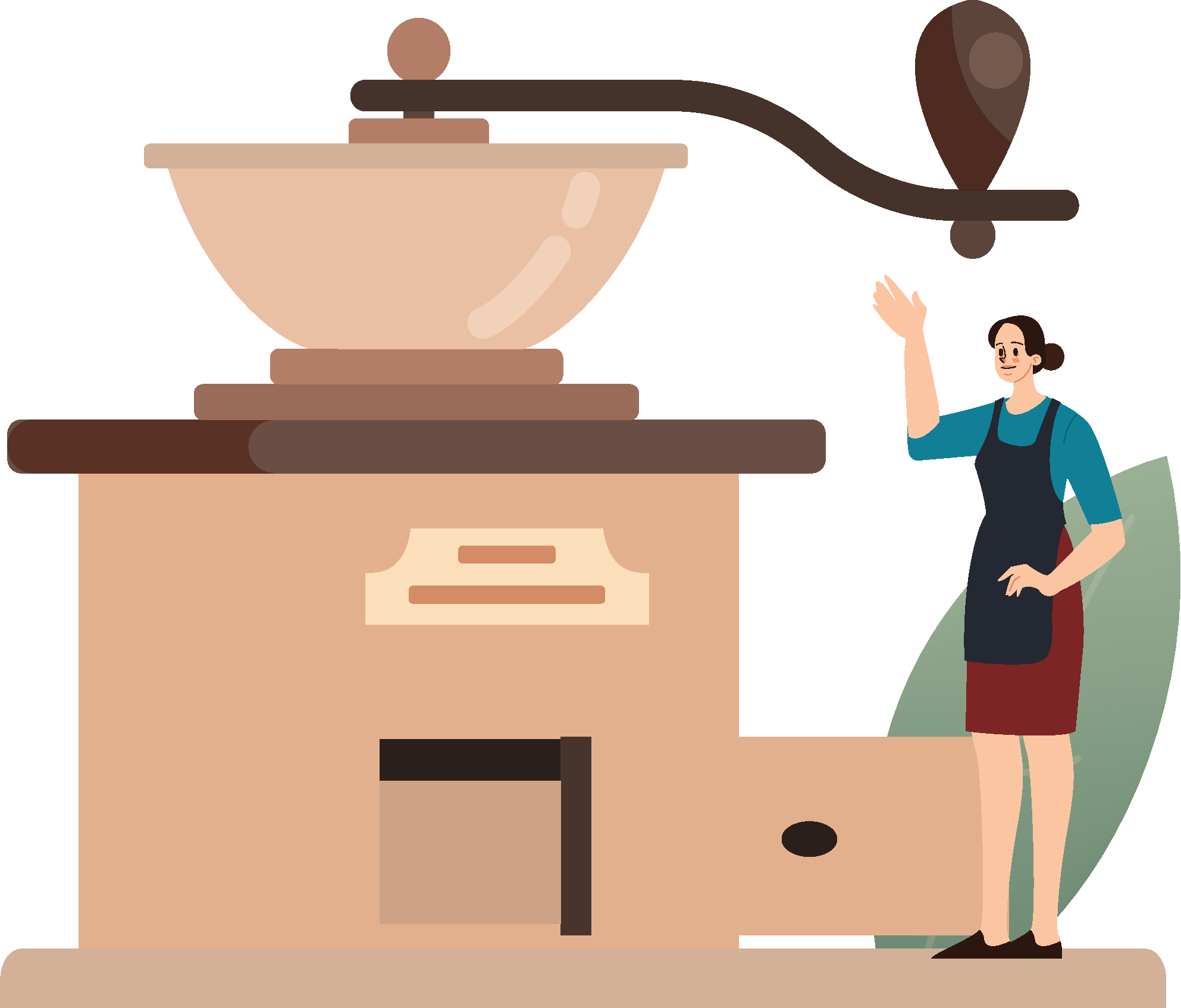
Only Grind Your Beans When You Need To
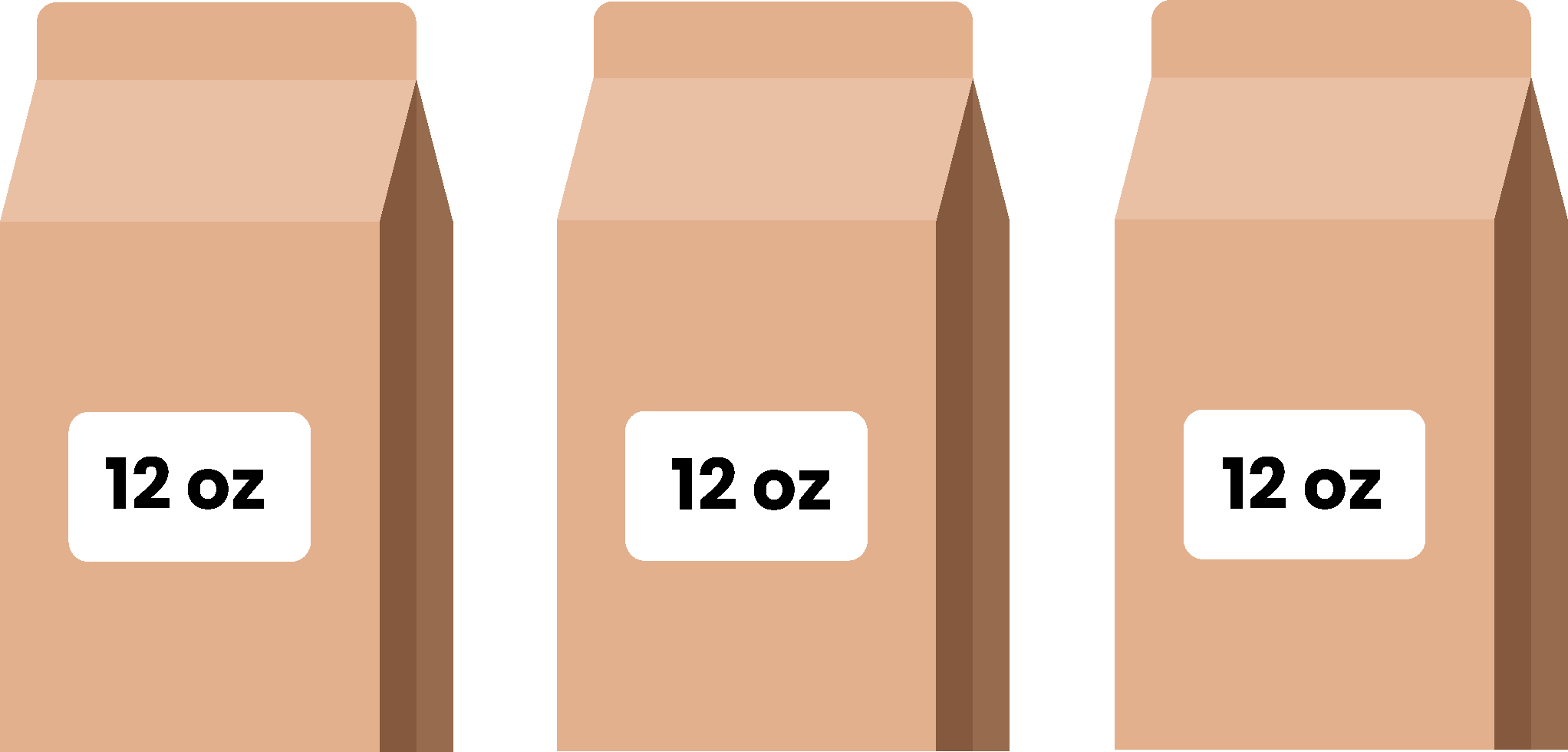
Buy Less, More Frequently
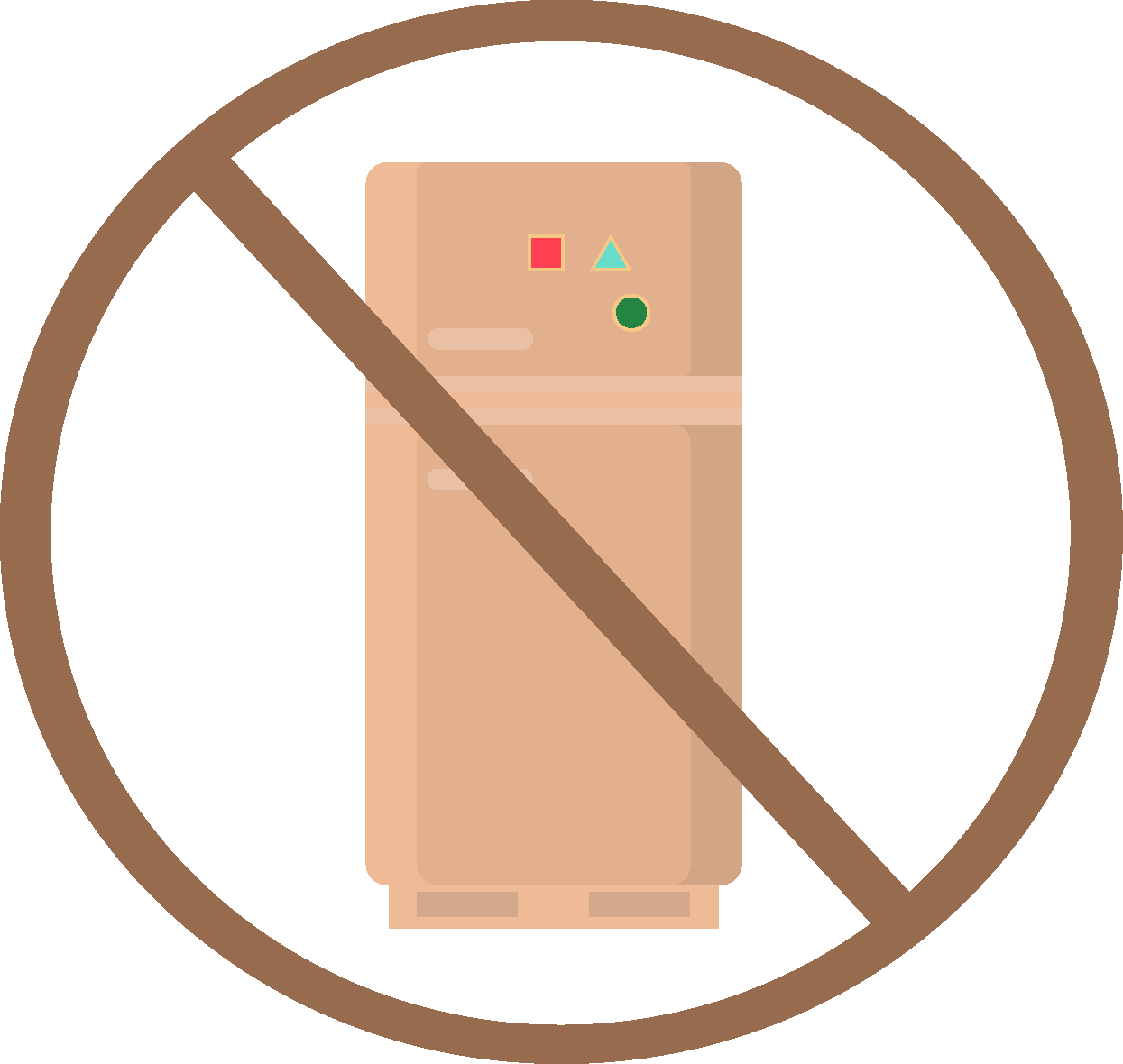
Don't Store in Fridge or Expose to Moisture
Buy Your Coffee as Fresh as Possible
Buying freshly roasted coffee is a good way to enjoy your drink at its peak because it will last for a few weeks.
You can pick up beans from local roasters or specialized coffee shops on the day of roasting.
Ensure You Buy Whole-Bean Coffee
Coffee beans are a good vessel in and of themselves to retain aromas and flavors that are later revealed in your morning cup of joe.
Ground coffee stays fresh for only 15-30 minutes, while whole-bean coffee stays fresh for weeks.
Whole beans have another advantage: you can grind them for any brewing method.
For the best taste, each method requires a certain grind size.
Only Grind Your Beans When You Need To
Freshly ground beans open up better when brewed, and their essential oils don't evaporate immediately.
Coffee made with freshly ground beans will be more intense and flavorful.
Opening a pack of beans, weighing out the right amount, grinding the beans while inhaling their aroma, then brewing the beans is a ceremony that will enhance your enjoyment of each cup.
Buy Less, More Frequently
Even with proper storage, beans will begin to lose their flavor within a month.
If you buy large bags of coffee, you increase your chances of brewing a stale drink.
It's best to only buy as much as you can use up in one to two weeks.
Don't Store in Fridge or Expose to Moisture
You shouldn't store beans in the refrigerator because two main enemies of coffee—temperature changes and foreign smells—reside there.
When the fridge doors are opened, condensation forms on the coffee and excess moisture gets in, which can make your coffee go bad.
Also, coffee absorbs odors very quickly, and fridge aromas are not what you want to notice in your drink, right?
Specialty Coffee Brewing
It's important to prepare your specialty coffee properly.
Brewing errors can result in a loss of flavor.
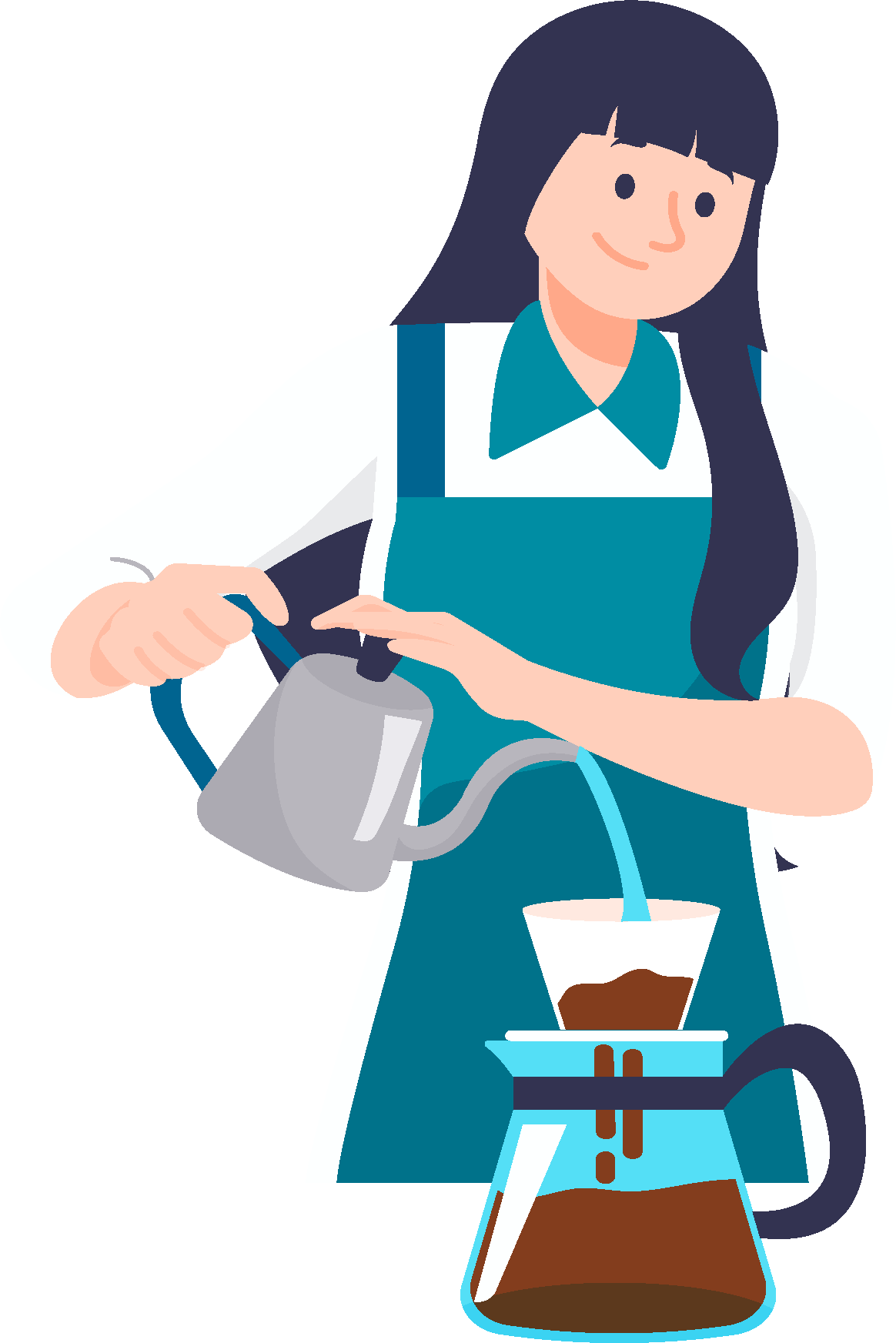
Brewing Recommendations

Use AeroPress, Chemex, Hario or cold brew
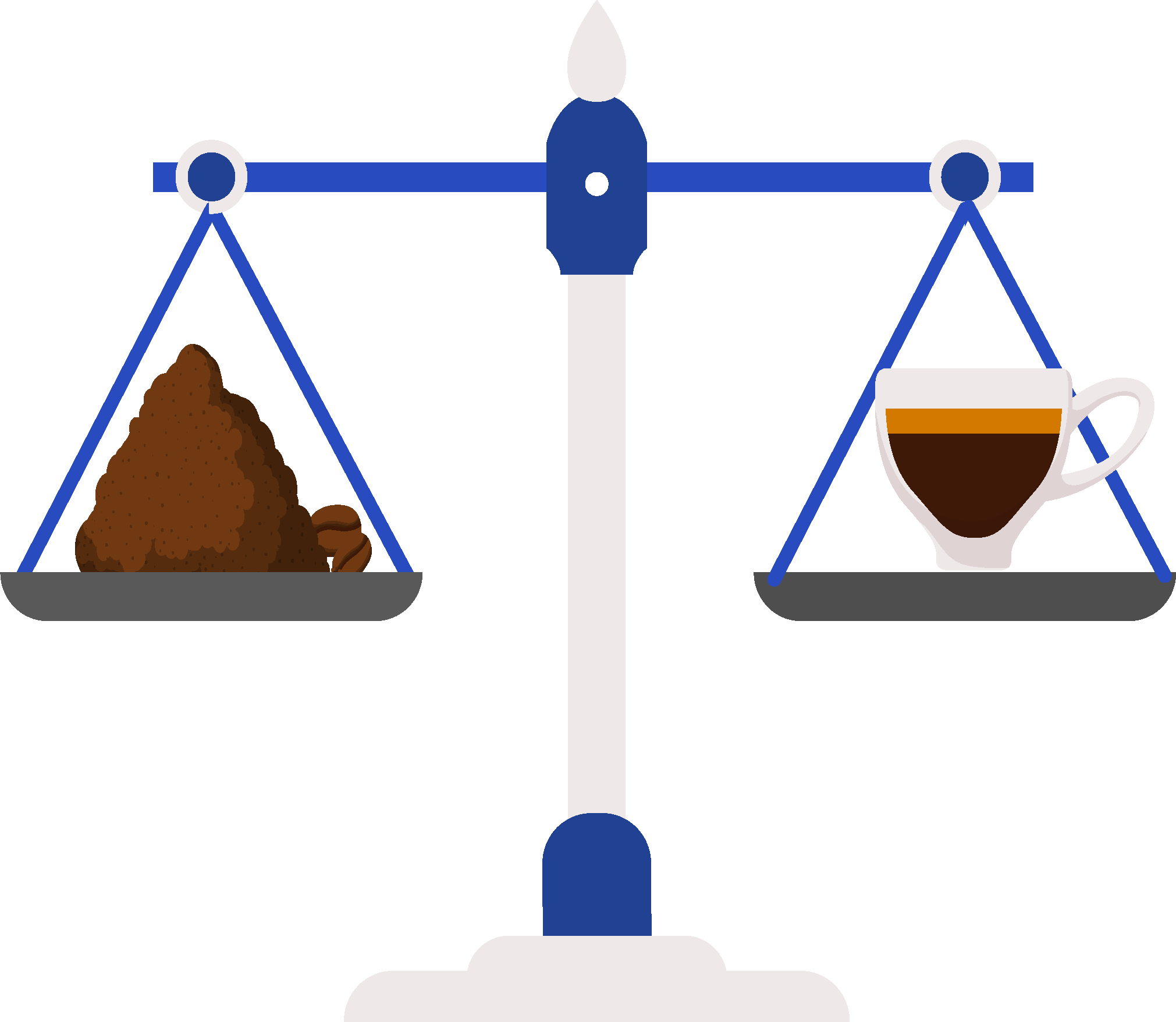
Observe the exact dosage

Grind the amount of beans you are going to use
Specialty coffee best reveals its flavor nuances when prepared with alternative brewing methods like an AeroPress, a Chemex or Hario pour-over coffee maker, or a cold-brew coffee maker.
Use a scale when preparing coffee. This will help you maintain precise dosages and better control the flavor of your drink.
And to avoid waste and spoiled coffee, grind only the amount of beans you intend to use.
FEATURED RESOURCE
How To Make Coffee
The only guide you'll need to brew the best coffee in 2021
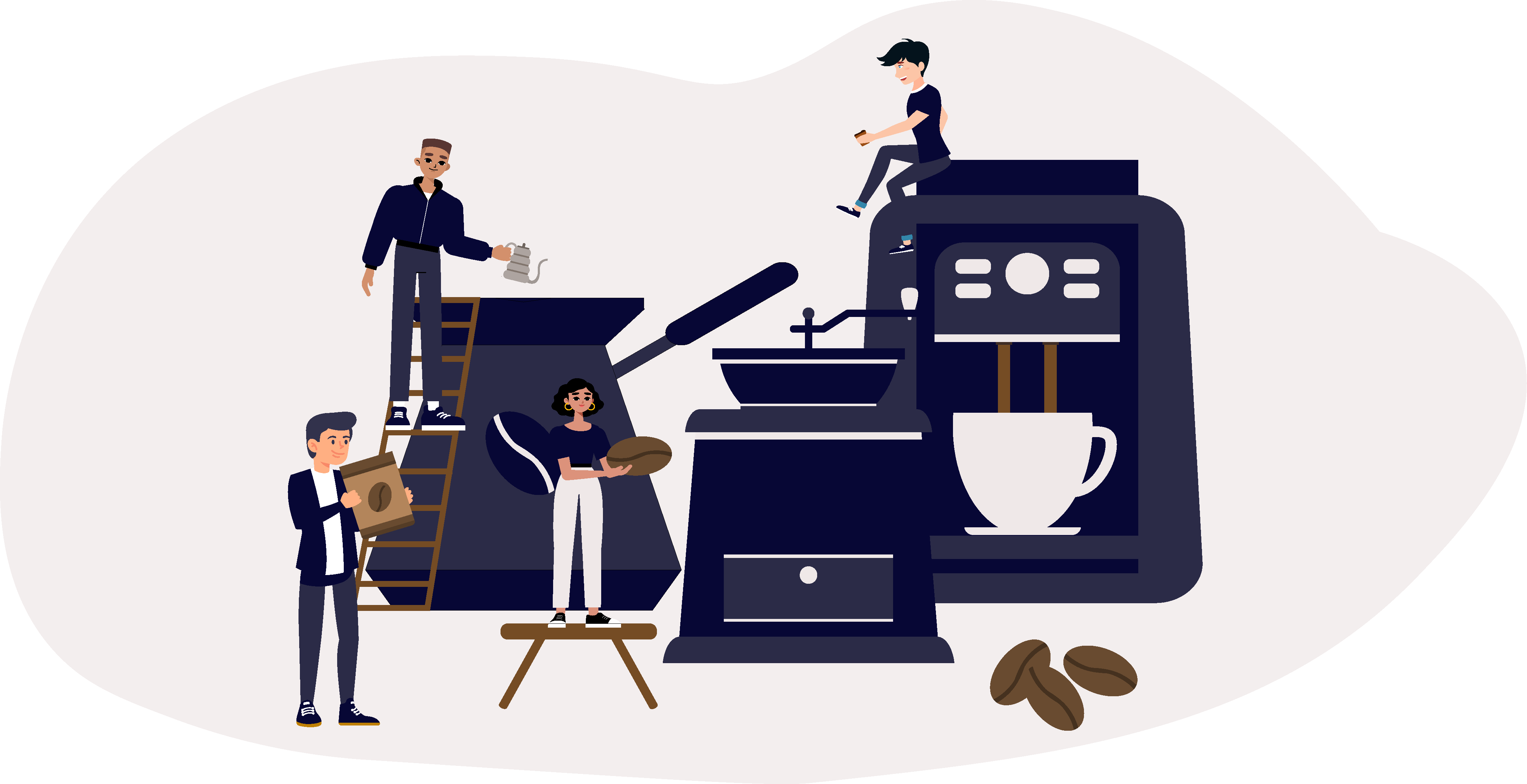
Other Varieties and Trends
Coffee culture is thriving, coffee shops are booming, and people are becoming more selective.
Your experience with specialty coffee may go beyond what we've described above.
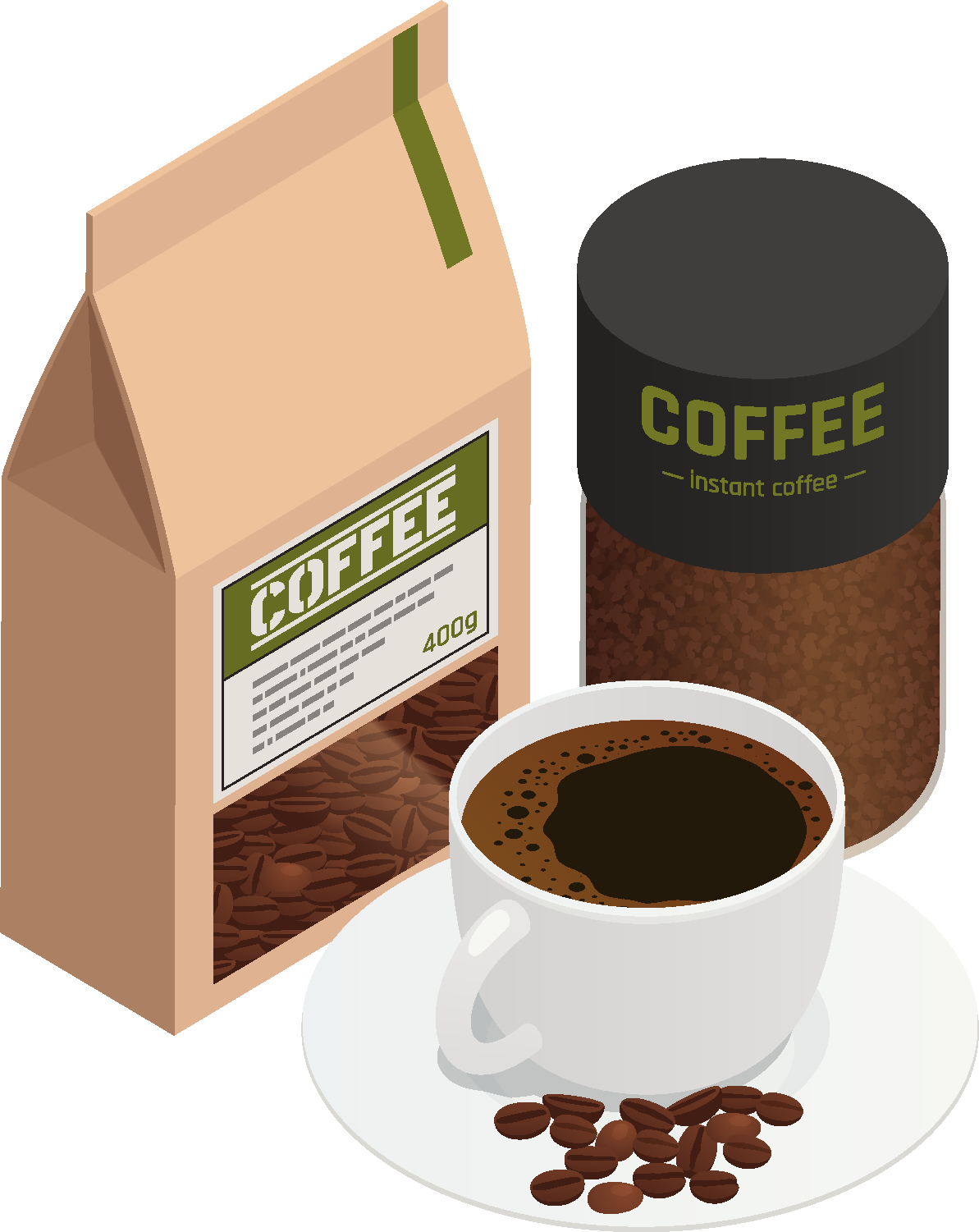
Decaf Specialty Coffee
Decaffeinated coffee has long had a reputation for being tasteless.
Many early decaffeinating methods removed both caffeine and flavor elements.
But now, opting for decaffeinated coffee now doesn't mean giving up the taste of coffee.
This is great news for those who are overly sensitive to caffeine or who prefer to avoid its stimulating effects.
For specialty coffee, the issue of maintaining the beans' flavor profile is particularly acute.
Finding high-quality decaffeinated coffee is a little trickier than finding high-quality regular coffee, but there are options.
If you choose a product made from quality beans, from which the caffeine is extracted without the use of solvents, you can get excellent coffee.
To ensure that decaf specialty coffee doesn't disappoint, look for packages marked "Swiss Water Process."
This process is certified organic, removes caffeine from the beans without the use of chemicals, and retains the coffee's original flavor characteristics.
Due to the higher production cost of Swiss Water Process decaf coffee, the price is higher, but it's worth it.
Specialty Instant Coffee
Instant coffee is rarely mentioned when talking about specialty coffee, but such a product exists and has some advantages.
You may not always have access to a good grinder and coffee maker.
In such a situation, instant coffee can come to the rescue.
It's convenient to use while on the road, while hiking or camping, or when staying at a hotel.
Previously, speed and convenience were never combined with great flavor.
Specialty instant coffee solved this problem.
However, its price can be several times higher than that of regular instant coffee.
Freeze-drying technology is used to create specialty instant coffee.
Pre-brewed coffee is frozen, then dried using a vacuum.
This method preserves the unique characteristics of the beans.
There is also a spray-drying method during which brewed coffee is sprayed into hot air and becomes a powder.
This process has a lower cost than freeze-drying, but at the expense of quality: it removes aromatics from the coffee.
The Latest Specialty Coffee Trends
Let's take a look at the latest trends so you know how to expand your coffee experience.
Coffee Box Subscriptions
Drinking coffee made from freshly roasted beans of the highest quality is possible with subscriptions from roasters.
If you've already found what you like, you can get the right amount of beans every month, delivered straight to your home.
By using a coffee box subscription service, you can be sure that you are receiving freshly roasted, delicious beans.
Also, you don't have to monitor your stock of coffee—the right amount will arrive at your doorstep.
Nitro Cold Brew
This is cold brew coffee infused with nitrous and served through a keg tap in coffee shops.
It resembles draft beer with a velvety foam.
You can also buy a canned version.
First, the coffee is cold brewed for 12-24 hours, then it's infused with nitrous.
This brewing method enhances the natural sweetness of the beans and reduces the coffee's acidity.
Sustainably-Grown Beans
Consumers are beginning to wonder where and how their coffee is grown.
They often prefer a product that can be traced back to a specific farm.
Organic coffee is grown without the use of pesticides or chemicals and is labeled "USDA Organic" in the US.
Organic coffee cultivation revolves around respect for the environment.
Farmers are in harmony with the ecosystem and help to preserve forests while growing coffee.
This can protect rare birds and butterflies. There is even such a thing as Bird Friendly certified coffee.
Ways to Grow Your Specialty Coffee Knowledge

Read coffee blogs and magazines, and listen to podcasts.
You will learn not only about how specialty coffee is grown and produced, but also about different ways of brewing it at home, about coffee equipment, and much more.
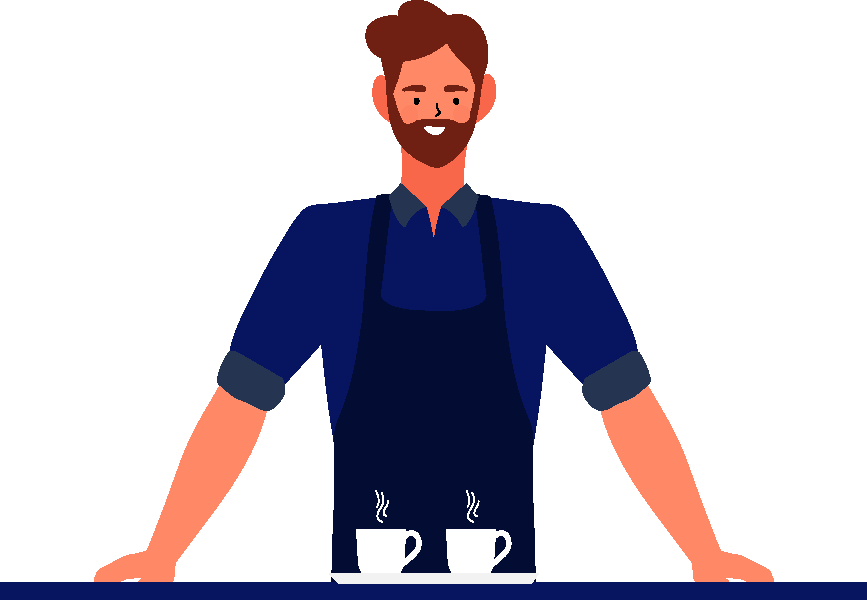
Ask baristas at specialty coffee shops.
Baristas devote a lot of their time to coffee and are ready to share their knowledge with anyone who's interested in a quality drink.
They'll tell you a lot of interesting things not only about brewing, but also about countries where coffee is cultivated, the varieties of beans, and how beans are processed.

Attend coffee tastings, festivals, workshops, and trainings.
You can read all you want about the flavor notes of beans from different regions and how they unfold with different brewing methods, but it's best to gain this knowledge through experience.
FAQ
What is specialty coffee?
Specialty coffee consists of beans of the highest grade, which have been approached with particular care at all stages of production: on the farm and during processing, transportation, and roasting.
Thanks to this approach, the coffee will have clear flavors and an outstanding taste.
Only single-origin Arabica beans that score 80 or more points on the SCAA scalecan be recognized as specialty coffee.
What makes specialty coffee so special?
What makes it special is the approach to production, which is based on ethical principles, high quality and the desire to improve the coffee community.
With this approach, you can enjoy a variety of flavors depending on country of cultivation, processing methods, and roasting profiles.
What's the difference between specialty coffee and commercial coffee?
Only single-origin Arabica beans become specialty coffee.
Commercial coffee uses both lower-grade Arabica beans and Robusta beans, and sometimes creates blends.
How do you prepare specialty coffee?
Specialty beans' flavors are best revealed when using alternative brewing methods: AeroPress, pour-over, or cold brew.
Grinding the beans just before brewing and using the correct dosage will help you enjoy a delicious cup of specialty coffee.
Where can you buy specialty coffee?
You can buy it at specialized coffee shops, from local roasters, or online from roasters' websites.
How can you keep specialty coffee fresh longer?
Buy freshly roasted whole beans and grind just before brewing.
Don't buy coffee in large packages—only buy the amount you can use in a few weeks.
Store your coffee beans in sealed containers in a dry, dark place.
What is the Specialty Coffee Association?
The SCA is a non-profit trade organization that emerged from the merger of the American and European Specialty Coffee Associations.
The goal of the association is to develop the global coffee community.
It works to make specialty coffee prosperous and fair for everyone involved in production.
Why is specialty coffee so expensive?
Because its production costs are higher than those of commercial coffee.
When you buy specialty coffee, you pay for the highest-quality product that's shade-grown high above sea level, hand-harvested at a specific time, processed and roasted correctly, and brewed well.
Is all specialty coffee organic?
No—specialty coffee packaging does not indicate specific farming methods.
But it can be organic if grown by traditional methods without the use of chemicals and pesticides.
A USDA Organic label indicates that the coffee is cultivated with the environment in mind.
Conclusion
Specialty coffee is made from the finest-quality beans, which reveal bright notes in your cup.
The high price of such coffee accounts for the entire production chain—a chain that means you can enjoy subtleties of taste and get the best product.
The experience that specialty coffee provides is well worth the price.

